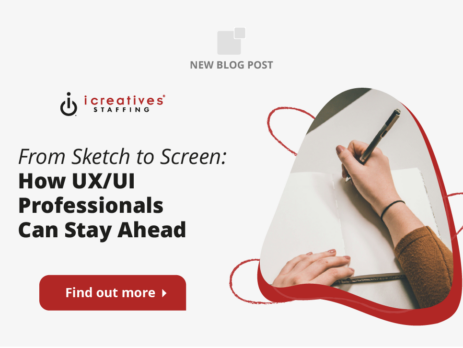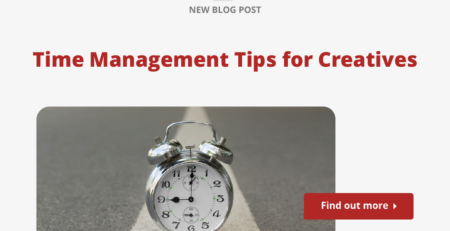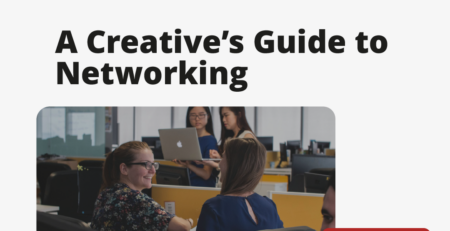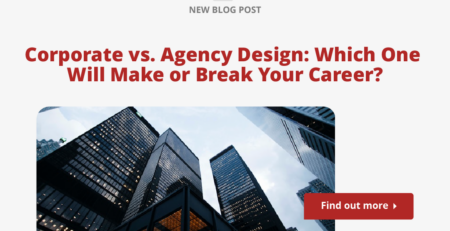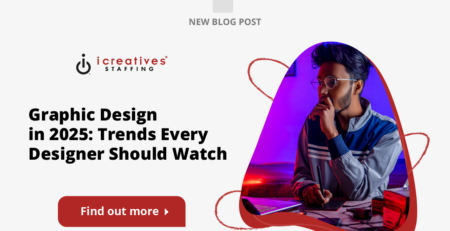From Sketch to Screen: How UX/UI Professionals Can Stay Ahead
From sketch to screen is more than a catchy phrase; it’s the practical arc of transforming fuzzy ideas into experiences people love. For UX/UI professionals, staying ahead means orchestrating research, strategy, design, and delivery with the rigor of an engineer and the empathy of a storyteller. The landscape changes quickly—new devices, patterns, and regulations—but the fundamentals of understanding users and shipping value endure.
Today’s leading teams treat design as a system, not a set of screens. They connect discovery to delivery with shared artifacts, consistent tokens, and reliable metrics. Adopting a human‑centered design mindset ensures the right problem is being solved before pushing pixels. That mindset also surfaces critical constraints—accessibility, performance, privacy—that must be integrated early to avoid painful rework.
Speed without clarity creates waste; clarity without speed misses windows of opportunity. The edge comes from balancing both. That balance is easier when teams debunk dogmas and get comfortable testing assumptions. If you haven’t yet, challenge inherited beliefs with evidence and modern practices—start with these 10 common UX/UI myths and how to move past them.
Another differentiator is bridging silos: designers partnering tightly with product, engineering, research, data, and marketing. Shared roadmaps, design systems, and joint review rituals turn handoffs into handshakes. When everyone sees the end‑to‑end picture, decisions compound into coherent products instead of fragmented features.
This long‑form guide tackles the most asked questions UX/UI professionals have about staying ahead—covering workflow, tools, design systems, metrics, and career durability. Use the sections for targeted deep dives, and jump between them via the anchored questions below.

Most Asked Questions (Jump to answers)
- What is the end‑to‑end UX/UI workflow from sketch to screen, and how do I optimize each stage?
- Which tools and prototyping platforms should I master in 2025 to move faster without losing quality?
- How do I build and scale a design system that engineers and PMs actually adopt?
- What UX/UI metrics prove impact and guide better product decisions?
- How can I future‑proof my UX/UI career—skills, portfolio, and network—to stay relevant?
What is the end‑to‑end UX/UI workflow from sketch to screen, and how do I optimize each stage?
The modern UX/UI workflow is a loop, not a line: Discover → Define → Design → Validate → Build → Measure → Iterate. While deliverables vary by team, the intent is constant—reduce uncertainty, increase usability, and ship meaningful outcomes. A clear cadence with explicit entry/exit criteria prevents “design in a vacuum” and last‑minute handoff chaos.
At a high level, align your process to user value and business outcomes. A concise reference like the Nielsen Norman Group definition of UX helps anchor discussions in value rather than artifacts. Keep stakeholders focused on problems, not just pixels.
| Stage | Goal | Primary Deliverables | Risks if Skipped | Primary Owners |
| Discover | Understand users, context, and constraints | Research plan, interviews, competitive scan | Solving the wrong problem | Researcher, Designer, PM |
| Define | Frame the problem and success criteria | Problem statement, JTBD, OKRs | Scope creep, misalignment | PM, Designer |
| Design | Explore and converge on solutions | Flows, wireframes, visual comps | Inconsistent UX, rework | Designer, Eng (review) |
| Validate | De‑risk with users | Prototypes, usability findings | Shipping unusable features | Designer, Researcher |
| Build | Implement with fidelity | Specs, tokens, stories | Quality gaps, tech debt | Engineering, Designer |
| Measure | Assess outcomes | HEART, funnel, qual feedback | Blind iteration | Product, Data, Design |
Discovery turns assumptions into knowledge. Start with existing data, then fill gaps with interviews or contextual inquiry. Map pains to jobs‑to‑be‑done and quantify the opportunity. Socialize a crisp brief with problem, persona, constraints, and success metrics before exploring solutions—this is your guardrail against scattered ideation.
Definition is where you sharpen the aim. Convert insights into hypotheses, define success via OKRs or UX targets, and capture must‑have constraints (privacy, performance, compliance). Agree on what “good” looks like and how you’ll test it. Clear definitions reduce rework later.
Design exploration should diverge before it converges. Start with fast sketches and low‑fi wireframes to test information architecture and critical paths. Use structured ideation to broaden options, then shortlist candidates against your success criteria. When ready, move to mid/high fidelity where micro‑interactions and hierarchy matter; resources like UI typography guidance help lock in clarity and rhythm.
Throughout, maintain tight alignment between UX and UI. Bridge roles intentionally—see how UX and UI work together in practice in this explainer: UX × UI collaboration. Shared components, tokens, and review rituals avoid late‑stage surprises.
- Prefer low‑fi early: it invites critique and saves time.
- Prototype the riskiest parts first (navigation, forms, edge states).
- Document decisions; rationale scales better than memory.
Validation turns confidence into evidence. Even five quick usability sessions can catch most severe issues. If you’re new to testing, start with a primer like Usability Testing 101 and adjust fidelity to your questions. Triangulate findings with analytics and support tickets when available.
Beyond comps, spec the build. Provide redlines, motion details, empty/error states, and accessibility notes. Align with platform conventions—Material for Android (Material 3) and Apple’s HIG (Human Interface Guidelines)—to speed implementation and meet user expectations.
Handoff is a collaboration, not a ZIP file. Co‑review stories with engineers, track open questions, and pair on tricky interactions. Strengthen the bridge across disciplines—practices from managing software teams apply here. Ship with an accessibility checklist grounded in WCAG to ensure inclusivity from day one.
Which tools and prototyping platforms should I master in 2025 to move faster without losing quality?
Tools evolve, but your advantage comes from choosing a stack that supports clear thinking, seamless collaboration, and measurable outcomes. Master one platform deeply for speed, know the neighbors for flexibility, and learn enough automation to eliminate repetitive work.
For brainstorming and alignment, master a digital whiteboard. Miro is a popular choice for remote ideation, affinity mapping, and journey mapping. Build reusable workshop templates so you start from structure, not from scratch.
For interface design and prototyping, a single source of truth matters. Figma dominates for components, variants, auto‑layout, and multiplayer editing. Leverage variables and tokens to connect design decisions to engineering realities.
Research stacks should cover moderated and unmoderated tests, surveys, and repository management. Focus on workflows: recruiting participants, tagging insights, and turning findings into decisions. Whether your org uses dedicated tools or scrappy ones, the outcome is the same—evidence that guides design.
Accessibility belongs in your daily toolkit. Use the WebAIM Contrast Checker to validate color choices and hit minimum ratios across states. Add keyboard testing and screen reader passes to your routine.
Versioning and collaboration with engineering benefit from developer‑native tools. Learn how design tokens map to repositories and pipelines, and become comfortable with GitHub workflows for docs or token syncs. Speaking dev accelerates trust and delivery.
For motion and micro‑interactions, lightweight prototypes go far. Use simple easing and duration heuristics to convey intent clearly. Export principle specs (timings, curves) alongside mocks to reduce guesswork in build.
Automate the boring parts. Lean on plugins or small scripts to batch‑rename layers, validate frames, and generate assets. Automation reduces human error and frees time for higher‑order design problems.
Security, privacy, and compliance matter when choosing tools. Confirm data residency, SSO, and access controls—especially for user recordings and PII. Compliance alignment avoids painful vendor switches later.
Stay current without chasing shiny objects. Curated guides like the best prototyping tools roundup and a forward‑looking scan of top UX/UI tools for 2025 can inform your roadmap while you keep shipping.
How do I build and scale a design system that engineers and PMs actually adopt?
Design systems succeed when they solve real problems for real teams: speed, consistency, quality, and accessibility. Treat the system like a product—prioritize work, ship increments, and measure adoption. Start small with high‑leverage components and tokens used across critical flows, then scale.
Principles first, components second. Define voice, spacing, color, and motion principles; codify them into tokens that translate to code. A living inventory of patterns and anti‑patterns prevents drift as the system grows.
Governance makes or breaks adoption. Set contribution and review paths, empower a cross‑functional guild, and invite healthy critique. A culture of candor helps—see how psychological safety enables the tough conversations that systems require.
Tokenization is the connective tissue. Bridge design and code with a tool like Style Dictionary so color, spacing, and typography stay in sync across platforms. Tokens reduce regressions and accelerate theming.
Documentation is your sales pitch and your safety net. Narrate the why, when, and how—not just the what. For a pragmatic overview, study the Design Systems Handbook to shape your docs strategy.
Close the loop with engineering. Component libraries should ship in code with robust stories, tests, and accessibility baked in. Tools like Storybook create a shared playground for designers, engineers, and PMs to collaborate and validate variants.
Adoption requires empathy. Interview consumers of the system, identify their biggest pains, and sequence improvements accordingly. Map dependencies like you would any product; this supply‑chain view from UX design as a supply chain keeps priorities grounded.
Version intentionally. Communicate changes, provide codemods or migration guides, and avoid breaking changes without a path forward. Changelogs and deprecation timelines build trust.
Measure what matters: coverage (percentage of product UI using system components), velocity (time to ship new features), and quality (defect rates, a11y issues). Tie these to business outcomes to maintain buy‑in.
Anti‑patterns to avoid: design‑only libraries, one‑off exceptions, and “big bang” rewrites. Start incremental, ship value early, and let adoption be earned—not mandated.
What UX/UI metrics prove impact and guide better product decisions?
Metrics translate design work into product and business outcomes. Aim for a balanced scorecard that captures user sentiment, behavior, and task success while aligning with your product strategy. Over‑indexing on any one dimension can skew decisions.
Start with the HEART framework – Happiness, Engagement, Adoption, Retention, and Task success. It’s a practical lens for product teams; learn the essentials from Figma overview of the HEART framework. Use HEART to scaffold dashboards that reflect user value, not just vanity counts.
Map HEART to your flows. For example, measure: Happiness via CSAT/NPS post‑task; Engagement via frequency and depth; Adoption via new active users; Retention via cohort return rates; Task success via completion rate, errors, and time on task. Define target bands and alert thresholds.
Pair HEART with a North Star metric that represents compounding value over time. Good write‑ups like Amplitude’s North Star primer can help you choose a metric users truly care about. Complement the North Star with guardrails (e.g., support tickets, a11y bugs) to avoid local optimizations that hurt the whole.
Run experiments with intent. Use A/B or multivariate tests to validate hypotheses and quantify lift. Pre‑register success criteria and experiment length to avoid p‑hacking. Document wins and losses; history prevents repeated detours.
Qualitative signals complete the picture. Mine interviews, support threads, reviews, and customer testimonials for patterns. Tag themes and tie them back to your metrics to explain the “why” behind the numbers.
Adopt standardized instruments where useful. The System Usability Scale (SUS) is lightweight and comparable across releases—see a solid primer at MeasuringU on SUS. Benchmark key flows and track improvements like any other KPI.
Design responsibly. Watch for bias amplification, fairness issues, or dark patterns that might distort metrics in the short term but erode trust long term. This overview of algorithms and design is a helpful starting point for ethical trade‑offs.
Instrument intentionally. Define events with engineering, capture necessary context, and validate logs. Add annotations to analytics to explain spikes after releases, promotions, or outages; unannotated charts invite misreads.
Tell a story with your dashboard. Lead with outcomes, then drivers, then actions. Make the next decision obvious—prioritized backlog items, experiments to run, or debt to pay down. When metrics prompt action, teams move faster together.
How can I future‑proof my UX/UI career—skills, portfolio, and network—to stay relevant?
Longevity in UX/UI comes from compounding skills, hard‑won judgment, and a credible signal of impact. Aim to be T‑shaped: deep in a core craft (e.g., interaction design, systems thinking) and broad in adjacent skills (research, motion, data, content). Curate learning cycles and reflect often.
| Skill Area | What to Level Up | Sample Actions | Proof of Mastery |
| Product sense | Prioritization, trade‑offs | Write PRDs, run design sprints | Shipped outcomes tied to metrics |
| Systems | Tokens, components, governance | Contribute to design system | Adoption, reduced defects |
| Research | Study design, synthesis | Plan tests, build repo | Behavior change, SUS lift |
| Communication | Storytelling, influence | Write briefs, present roadmaps | Cross‑functional alignment |
Leadership accelerates your impact sooner than you think. You don’t need a title to lead—start by clarifying problems, proposing experiments, and improving team rituals. Practical leadership advice tailored for creatives can help you level up influence and communication.
Your portfolio should read like a product narrative, not a gallery. Show the problem, the constraints, your approach, the trade‑offs, and the outcomes. Hiring teams value clarity on collaboration and decision‑making—this guide on what employers look for in a UX/UI portfolio will help you frame the story.
Publish work where your audience actually is. Curate case studies on your site and share teasers on Dribbble or full narratives on Behance. Don’t just show screens—show decisions, metrics, and lessons learned.
Strengthen interview fundamentals. Practice whiteboard prompts, product critiques, and design exercises. Structured preparation from UX interview tips boosts signal and confidence.
Understand the market so you can negotiate well. Calibrate with real data on UX/UI salaries, and know what levers matter beyond cash—scope, growth, mentorship, and flexibility.
Explore different paths. Agencies, in‑house, startups, and freelancing all teach different skills. If you want optionality, learn how to pitch yourself—here’s a primer on marketing yourself as a freelancer. For full‑time searches, a seasoned partner can help; here’s how to evaluate using a staffing agency.
Invest in your network with genuine mentorship and service. Join communities like ADPList for mentorship and UXPA for professional development. Speak, write, or run workshops to amplify your signal and help others.
Close the loop with negotiation skills. Prepare structured asks, anchors, and trade‑offs. Rehearse your narrative and bring receipts (portfolio, metrics, testimonials). Tactics from successful negotiations will serve you across roles and contexts.
Conclusion
Staying ahead in UX/UI is less about predicting the future and more about building a reliable engine for learning and delivery. Tight loops—discover, define, design, validate, build, measure—reduce uncertainty and compound quality. When these loops are shared across product and engineering, they become a competitive advantage.
Systems thinking turns scattered screens into coherent experiences. Tokens and components keep teams in sync, while governance and documentation make adoption sustainable. Measurable outcomes—in HEART, funnels, and qualitative signals—keep the work tied to user value and business results.
Tools are accelerators, not substitutes for judgment. Choose a stack that supports collaboration, accessibility, and speed; automate the repetitive parts to protect time for the hard parts: framing problems, making trade‑offs, and telling clear stories about decisions.
Careers endure when skills, relationships, and proof of impact keep growing. Curate a portfolio that shows your product sense, not just your polish. Invest in your network by giving first. Build fluency in metrics and systems to increase your surface area of influence.
Above all, design for people. Put users’ jobs‑to‑be‑done at the center, and use metrics to validate you’re helping them succeed. Combine principled foundations with pragmatic iteration, and you’ll deliver work that stands up to time, scale, and scrutiny.
From sketch to screen—and back again—your craft becomes the engine of outcomes. Keep your loop tight, your system healthy, your metrics honest, and your career narrative active. That’s how UX/UI professionals stay ahead.
In today’s competitive market, finding the right creative and marketing expert can be a challenge. But with icreatives, you’re in experienced hands. With 37 years in staffing and a track record of matching more than 10,000 employees to over 1,000 companies worldwide, we know how to connect you with the best. Plus, you only pay if you hire—there’s no risk, only results. Ready to find your perfect creative or marketing expert? HIRE WITH ICREATIVES today!

